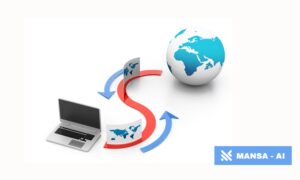Will Business Productivity Rise or Fall in the Age of Artificial Intelligence? 5 Ways to Capture Hybrid Productivity
Artificial intelligence is no longer described as the future of productivity; the technology is very much already here. Could the age of AI be a force for good when it comes to hybrid productivity? Emerging use cases suggest so.
The AI boom has won plenty of admirers across a range of industries. So much so that IDC’s Tech Insights for 2025 suggest that 60% of large organisations will have onboarded some form of generative AI to enhance operations by next year.
There are also high expectations for generative AI and automation technology as a force for enhanced productivity. IDC anticipates that artificial intelligence could drive $1 trillion in productivity gains by 2026 as part of a fundamental shift in how employees tackle their workloads.
With more businesses settling in the post-pandemic landscape somewhere between remote and in-house shift patterns in what’s known as hybrid working between home and office, it’s likely that employers will seek out AI solutions to support flexible shift patterns for their teams.
Hybrid working comes with communication and team cohesion challenges that arise naturally when colleagues lack face-to-face collaboration each day. But AI is set to be a force for greater productivity among workers operating flexible patterns, with more adopters using automation tools to improve efficiency.
With this in mind, let’s take a deeper look at five ways businesses are already utilising artificial intelligence to capture hybrid productivity:
Automating Workflows
According to data from the Small Business and Entrepreneurship Council, 76% of small business owners claim that artificial intelligence allows them to focus on high-value tasks like developing products or services or building targeted marketing campaigns in a way that boosts productivity.
The ability of AI to automate manual or repetitive tasks that would otherwise be time-consuming is one of the most common ways to improve productivity within your workforce.
Thanks to the power of artificial intelligence RPA tools, it’s possible to automate commonplace tasks like data entry, document processing, and invoicing in a way that minimises human error while freeing up the ability for your teams to focus on more strategic activities.
Another subset of AI, machine learning (ML), also allows businesses to pinpoint inefficiencies by analysing performance data and suggesting improvements, such as refining production schedules or reallocating resources. Artificial intelligence tools can even carry out predictive maintenance, which helps to reduce downtime and lower repair costs.
Intelligent Meetings
Remote collaboration has long been a burden for businesses operating on flexible work schedules while being wary of its impact on productivity.
However, AI tools are paving the way for a more seamless approach to communicating within teams. These technologies can not only summarise a whole day’s worth of meetings but also share highlights and key points for specific individuals or teams.
As a result, more people can access key information from meetings regardless of whether they were late, unable to attend, or are just struggling to recall certain talking points.
These tools can help to save time that boosts productivity and allows workers to focus on their most impactful workloads without delay or uncertainty.
Similar technology can also help to create a list of highlights from a week’s worth of emails, ensuring that no important correspondence is lost in any employee’s inboxes.
Data-Driven Insights
Artificial intelligence can also improve hybrid productivity by supporting faster decision-making. The technology can help businesses sift through large amounts of data to extract quality insights that can help shape operations and improve efficiency.
For instance, retailers have the ability to use AI to analyse customer purchasing behaviour and preferences, helping to deliver tailored marketing strategies that resonate with specific segments. With the ability to interpret big data to forecast demand, optimise inventory levels, and improve pricing strategies, more businesses can grow their efficiency and boost their competitiveness in a way that improves the overall productivity of staff.
Instant Brainstorming
One of the biggest drawbacks of hybrid work is that employees can struggle for inspiration when coming up with ideas. Whether you’re launching a new product or strategising campaigns, being in an office with other employees and fresh perspectives can be an advantage in terms of productivity.
However, large language models (LLMs) like ChatGPT and DreamHost’s AI Business Advisor are becoming strong options when drawing on inspiration faster and in a way that can help shape faster decisions.
It’s even possible to use these LLMs as a troubleshooting tool to solve specific issues within your business. These processes can give remote employees an excellent starting point rather than waiting for email responses from colleagues or managers.
Frictionless Collaboration
Intuitive platforms like Miro, Monday, and MURAL are also paving the way for communication beyond different time zones, helping remote employees from anywhere in the world to collaborate seamlessly.
These platforms mean that teams can tackle their tasks and deadlines by contributing during their working hours while keeping their progress accessible and visible in the cloud for colleagues to contribute to later on.
Caring for Productivity
Could artificial intelligence assist hybrid productivity? It’s clear with emerging use cases that the technology is supporting more efficiency across common business processes throughout many industries.
The ability for automation to enter the fray and speed up repetitive tasks could be a game-changer for hybrid workers to complete tasks while working on more complex challenges within their workloads, but the emphasis will be on employees to use these available tools in an effective and efficient way.
Artificial intelligence has opened the door to greater productivity for businesses; it’s up to remote workers to walk through it and improve operational efficiency.



































